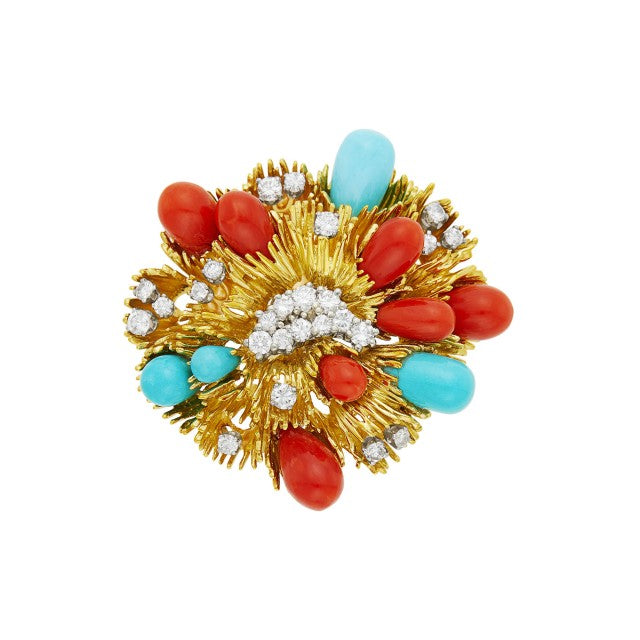There’s always a lot of talk about “signed jewelry”, meaning that it comes from an established jewelry house, or designer, and they have engraved their name on the back of the item. Often times a piece of signed vintage jewelry will sell for more than its unsigned counterpart, but really how much does a signature matter and does it really add to the value and/or cost of a piece?
The Right Signature
The right signature on the right jewel may add a premium to the price of the piece. That’s because signed jewelry, especially vintage pieces are the most desired and hard to find items. Why do collectors covet a signature? A signed piece from a renowned design house provides you with an assurance that you’re getting top quality gems, impeccable fabrication and stellar design.
“When a jewel is signed Tiffany, Cartier, or Van Cleef & Arpels, you know it is well made and that they use quality stones,” explains Miami-based dealer Steven Neckman of the eponymous firm. “Generally, with signed jewelry it’s a given that the quality is excellent with strong design.”
New York-based dealer, Richard Buonomo, principle of the firm bearing his name, agrees that a signed piece of jewelry carries a guarantee of quality, prestige and value, but he notes that there are some caveats to a signature’s worth. “A piece is more rare if it is signed, it is scarcity that drives prices up. Still a signature does not always mean much. Some pieces are so generic or have so little design, such as diamond solitaire earrings, that it doesn’t change the price much.”
Status Appeal
Beyond the value of a piece, Janet Levy of J.&S.S. DeYoung, in New York City notes that people also want signed pieces of jewelry to elevate their own status. “People have a desire to be associated with something that lifts them up in society and enhances their status. It’s a basic human instinct and a piece of jewelry with a signature denotes both quality and status.”
Certain signatures are always top of the list for those seeking signed pieces – Cartier, Van Cleef & Arpels, Tiffany & Co., Bulgari and Harry Winston. But Levy has noticed that over the past ten or 15-years name recognition has increased for many other design firms. “There is a much wider appreciation of special designers — Sterlé, Mellerio, Boivin. There were a lot of very refined French design houses and a circle of designers who were more art houses.”
Modern Versus Vintage
Levy says that the market for signed jewelry can be divided into two areas: Modern and vintage. “If there is a quality signed vintage piece it will be more valuable because these pieces are no longer made and they are very collectable. There are more collectors now, so those pieces are harder to find and more valuable. With modern pieces the signature is tied to market demand or quality. The pieces are not as rare because they are in production. The value is influenced by how available and how much demand there is for a particular name.”
It's important to keep in mind that most jewelry was not signed by the maker until the early part of the 1900s, so most older pieces won’t have a signature. However, like everything else there are some exceptions.
“It’s not just a signature that adds value,” concludes Buonomo. “Some pieces of jewelry are imbued with a certain character of design that is associated with that name. The jewelry will also have quality of materials and manufacturing. That’s when you have a perfect storm for everything to add value to the piece.”
Featured image (top of page): Diamond, coral, turquoise, platinum and gold brooch, signed Tiffany & Co., circa 1960s.
First: Diamond and 18-karat gold ring, signed Van Cleef & Arpels, circa 1950s; Second: Coral, malachite, lapis lazuli, diamond and 18-karat gold earrings, signed Van Cleef & Arpels, circa 1980s; Third: Diamond and platinum brooch/pendant, signed Cartier, circa 1950s; Fourth: Burma ruby, diamond and platinum earrings, Cartier Paris, circa 1970s.
Authored by Amber Michelle





